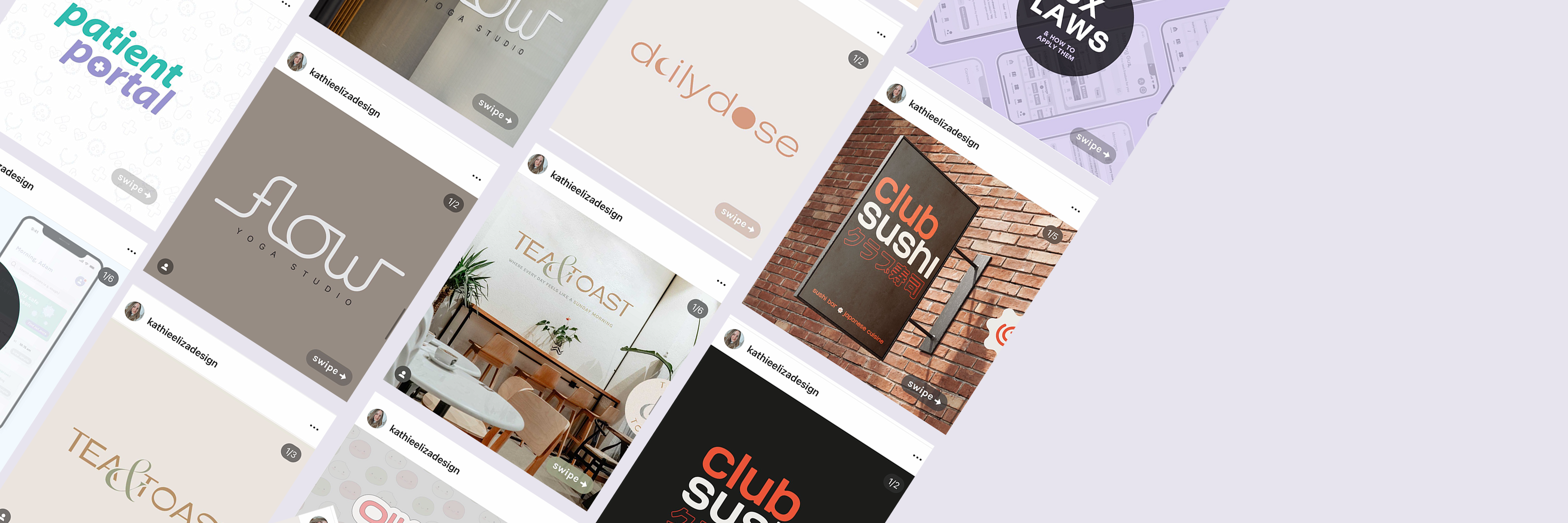
Brief:
To pick two social media platforms and create a brand for yourself. Self-promote your brand on your chosen platforms, exploring the highs and low of social media marketing. Join two social media platforms to build a brand for your design work. One of which is Linkedin to build networking for future employers and clients.
Branding, Identity and Marketing
Plan
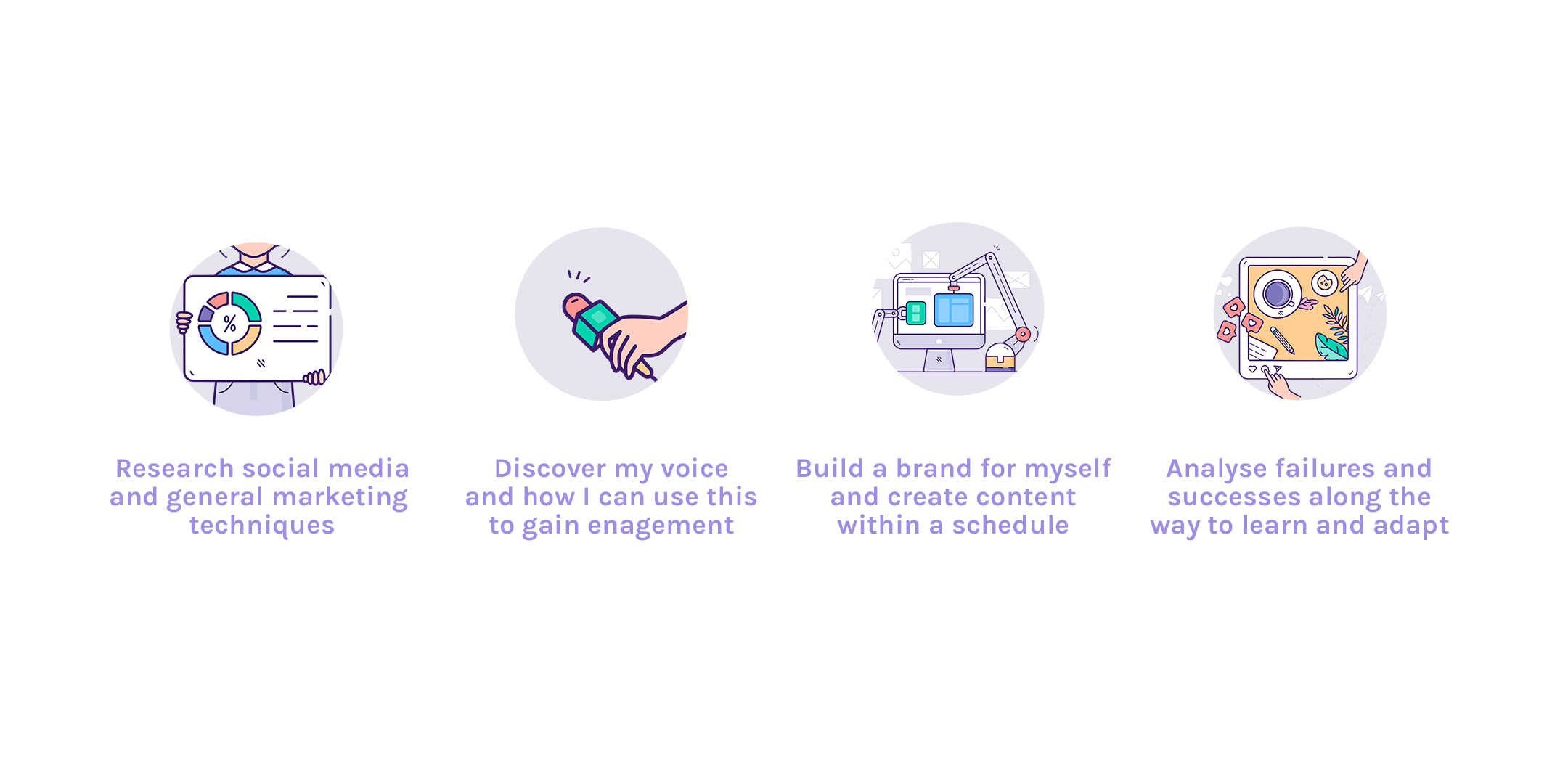
Brief Overview
1.1 From the brief I gave myself a plan to stick to. These are my main aim and objectives for this object. To begin this project it was necessary to carry out extensive research into social media marketing, copywriting and social media algorithms. Although I have been on social media as an individual since I was a young teen and feel as though I am more than capable of generating a following, I was out of my depth in terms of getting engagement for my design work.
Social Media
2.0 Instagram was my choice of platform. One of the reasons being I already have a design Instagram account with a modest following and minimal engagement, and it's a platform I'd benefit from expanding. Instagram also is great for brands and businesses with 90% of all Instagram users following at least one business account and 59% of smaller influencers believe that they get the best engagement (Gaurav Sharma). I expect that these 12 weeks will provide me with future insight. In order to prepare for this, I have examined successful accounts already present on these social media platforms as an example to follow in the hopes of accomplishing a certain degree of engagement.

@kristy.pinkpony on instagram
2.1 @kristy.pinkpony:
The first instagram account I wanted to include was @kristy.pinkpony. Kristy is from Australia and she has two popular accounts; including @pinkponycreative. However, I was more focused on Kristy’s individual account as she has more followers (160k). Kristy accumulates an average of 4k likes on each post.

@designsomemoore on instagram
2.2 @designsomemoore:
And my second instagram account inspiration is from @designsomemoore. Unlike the other accounts before, Vickie Moore is a branding designer from the same location, Southampton. Vickie has a smaller following of 35k and her likes fluctuate more from anything between 300 to 1k.
2.3 Instagram Research Observation:
From my initial research I gathered, there was some major changes I needed to make to my instagram account.
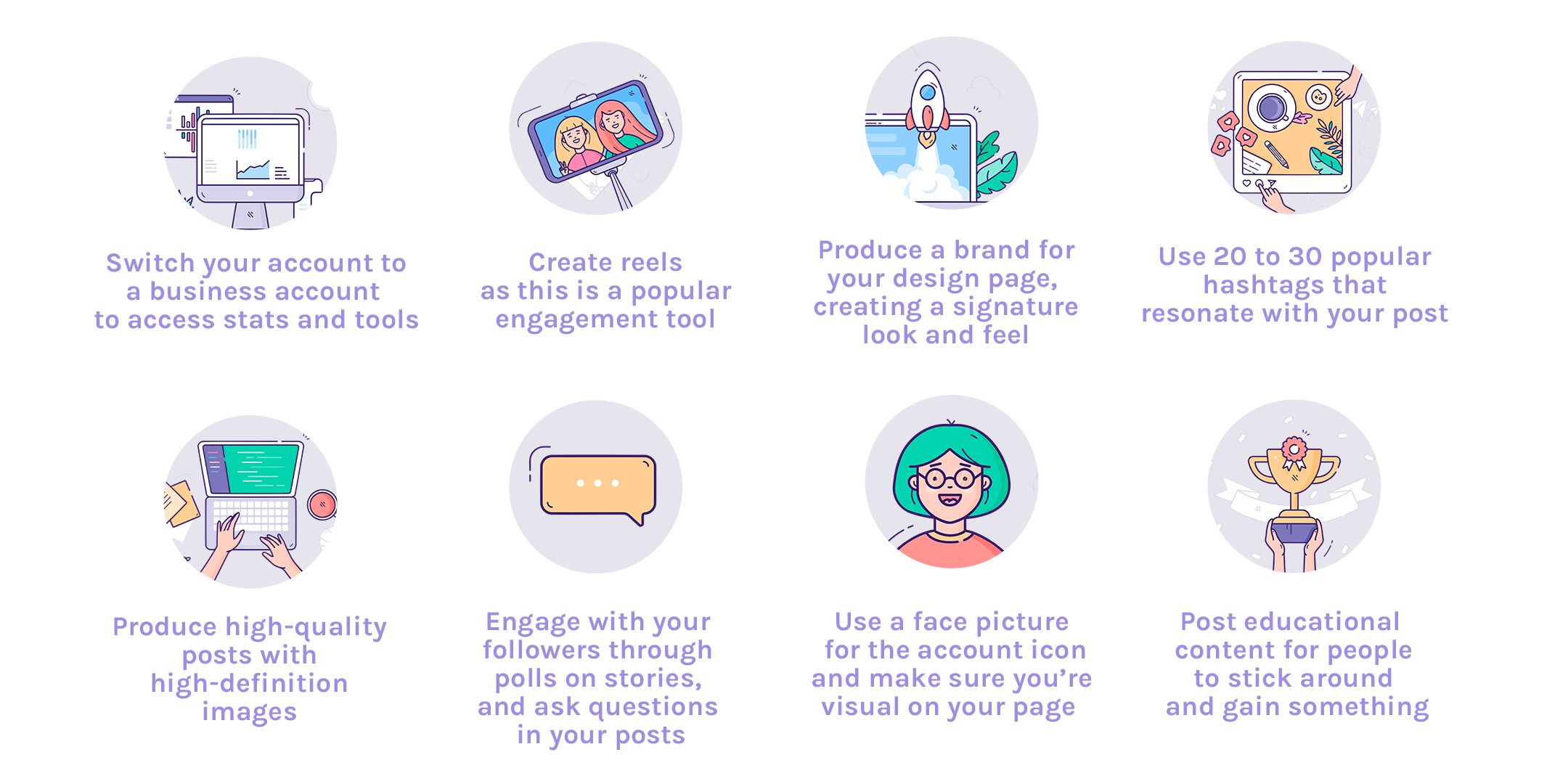

2.4 Linkedin

(Senior Product Designer at Apple)
As for LinkedIn I searched “Product Designer Apple” in the search bar and found this designer, Leonardo Mattei. I would love to be a product designer for Apple and it would be a great experiment to use his profile as a template for success in gaining a role like this.
I noticed some things Leonardo did that I would implement into my profile:

(Senior Product Designer at Apple)
2.5 Linkedin Research Observation:
From my initial research I gathered, there was some major changes I needed to make to my linkedin account.

Marketing
3.1 Power of Posting:
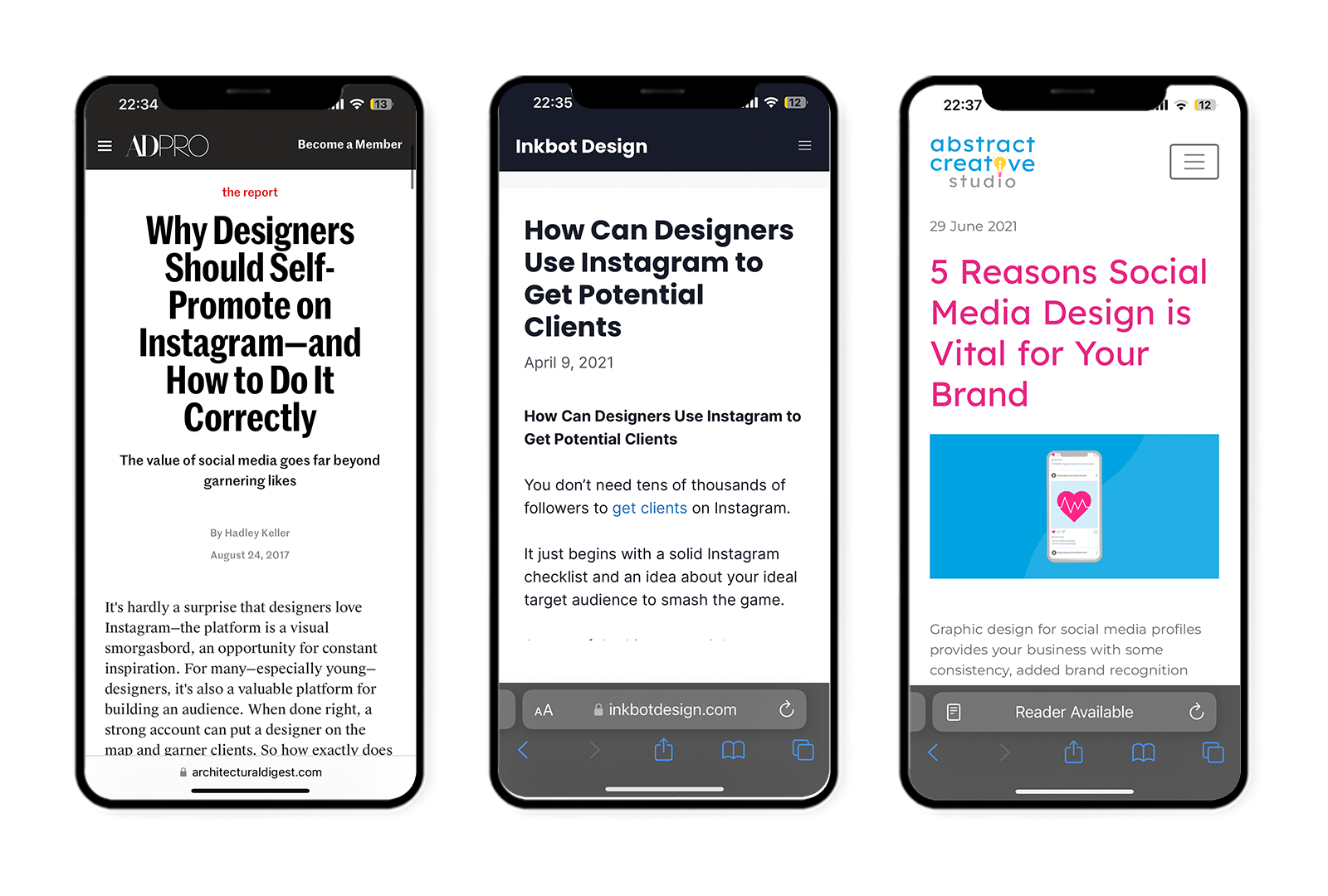
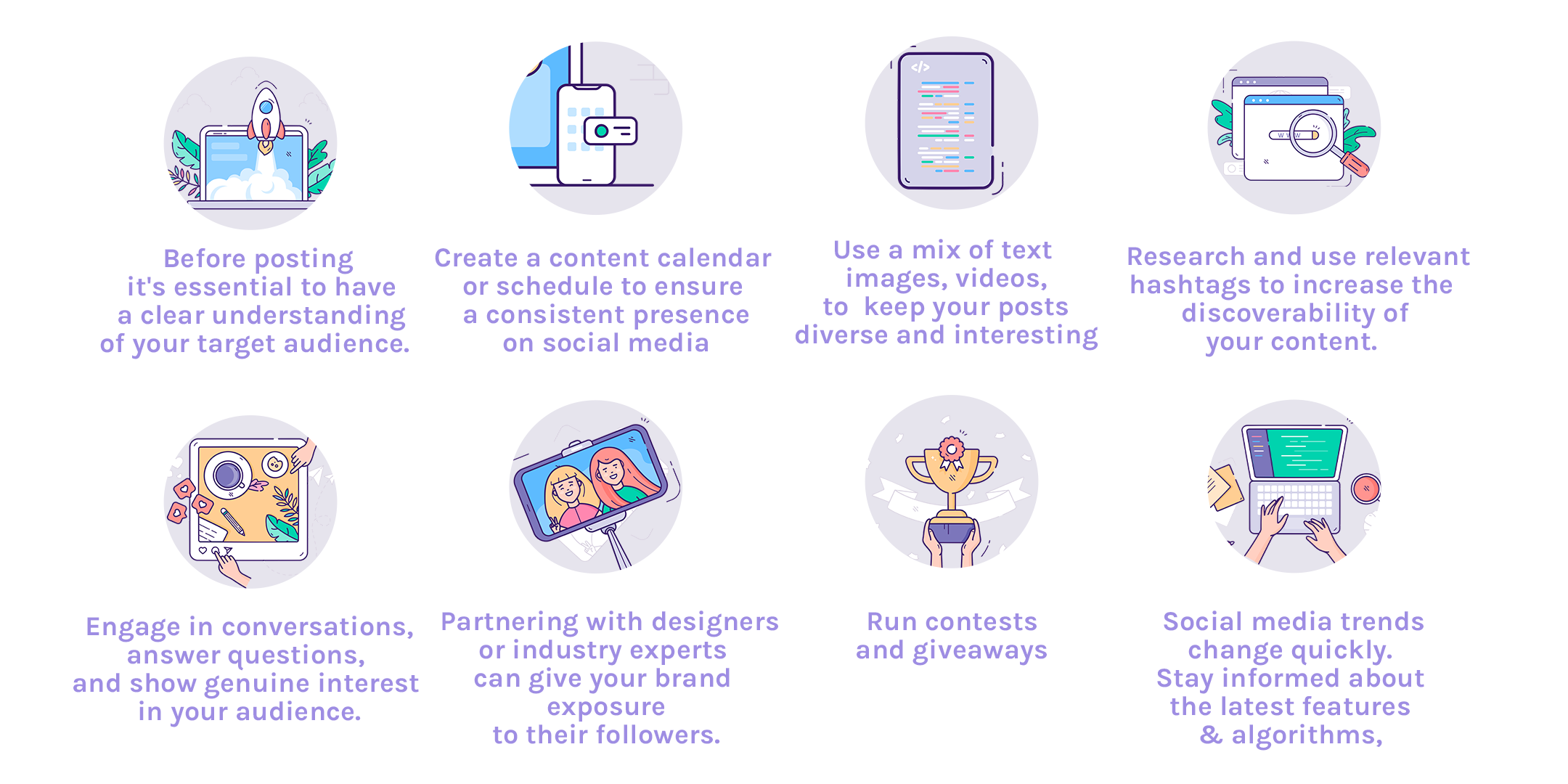
Branding


4.1 - Logo Design: For my rebrand I decided to ditch using my surname and use my instagram handle kathieeliza. With this, I sketched some initial logo designs with the initials k and e. I found these a lot more creatively fun to design than using k and w like beforehand.
I played with some different ideas of how to achieve what I see as my brand: unique, creative yet approachable. I then went into Adobe Illustrator where I vectorised some of the sketches and really liked the k going into an e, especially because this is how I used to doodle my intial into my school books. It adds a story behind the logo, a sweet anecdote.
During my time at university I have grown very fond of the colour Lilac, my classmates and lecturers know of this obsession and it's become a "brand" for me. I decided to keep this going if people already associated this with me.
I also created a "swipe" asset for my carousel posts on instagram, this acts as a call-to-action to instruct my audience to look at the additional pictures. Along with this, I created a pattern using my logos which is great for strong branding.
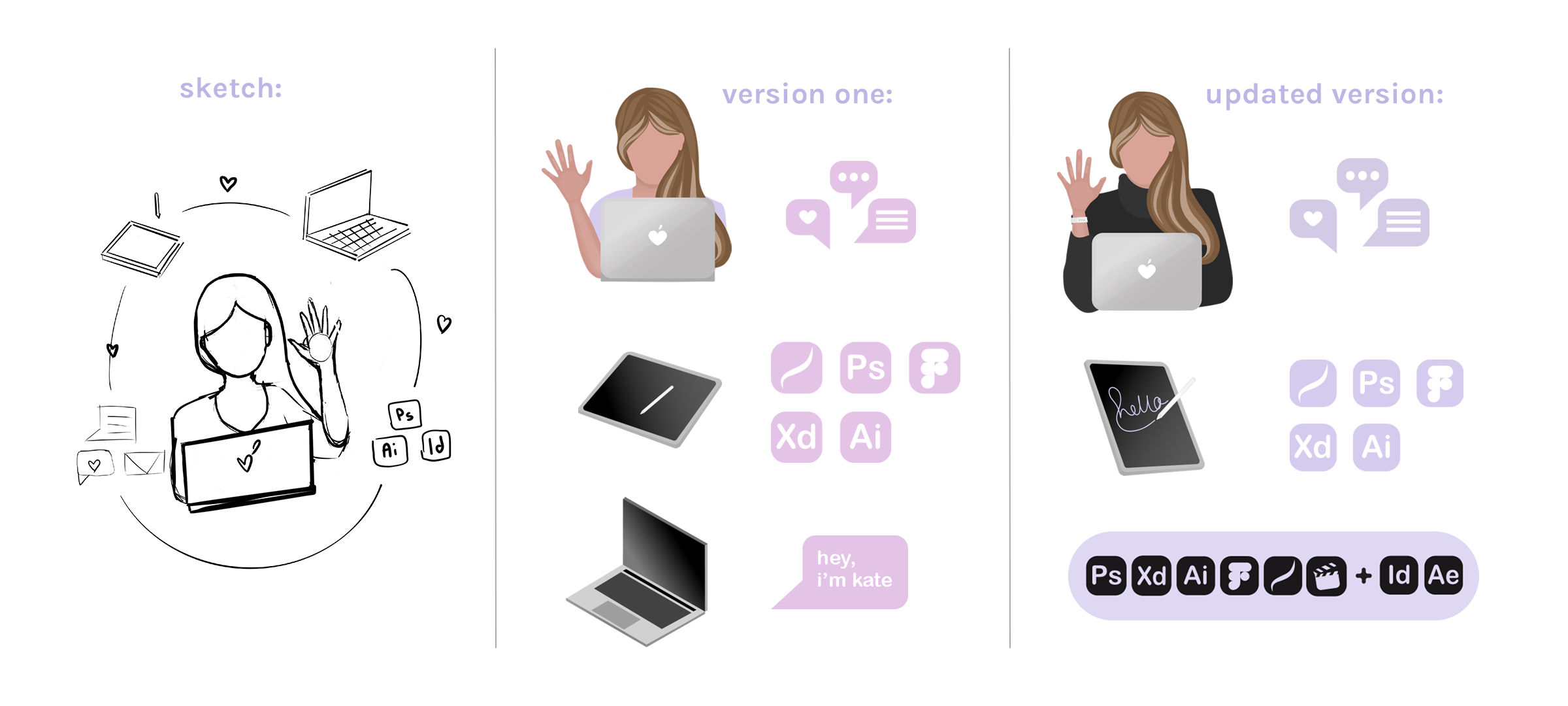
4.2 - Brand Assets:
Prior to this project I produced some illustrations to promote my vector art which have become a part of my website design, however I often used different hex codes to achieve this lavendar/pink and it was becoming very inconsistent. I swatched the current assets in the branding colour scheme. Alongside that, I adapted the illustrations to match my current vector abilities. This included some personal items, such as an apple watch (which I wear every day) and sporting a baggy turtleneck jumper. These drawings combine the person behind the brand (me!) while showcasing my software skills.
I did some research into using illustrations before continuing this approach into my rebrand, I found that Illustrations may assist to better portray the tone of voice and approach by adding a warmer and more engaging personality (“The Power of Illustration in Branding and Screenmedia”)
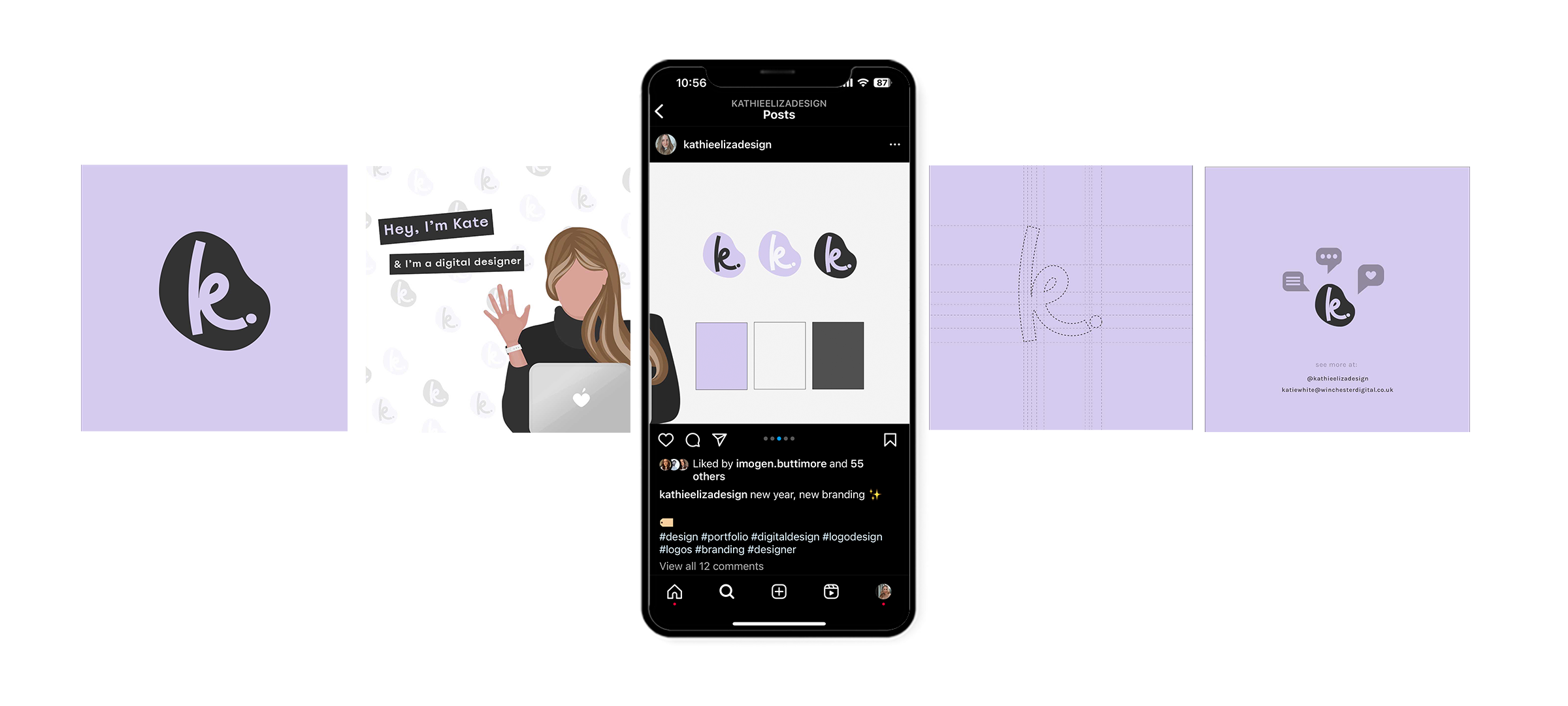
Initial Sitemap
4.3 - Publishing the rebrand:
Before posting any new content, I published my rebrand and the feedback was very positive. Not only for my audience, but I felt, myself, more confident in saying "I'm a designer" - It began to feel very real from the moment I had established a brand for myself. I felt less of a student, more of a business woman. In fact, marketing week said "brands can be an integral part of shaping a brave new narrative for businesses" (Vardy).
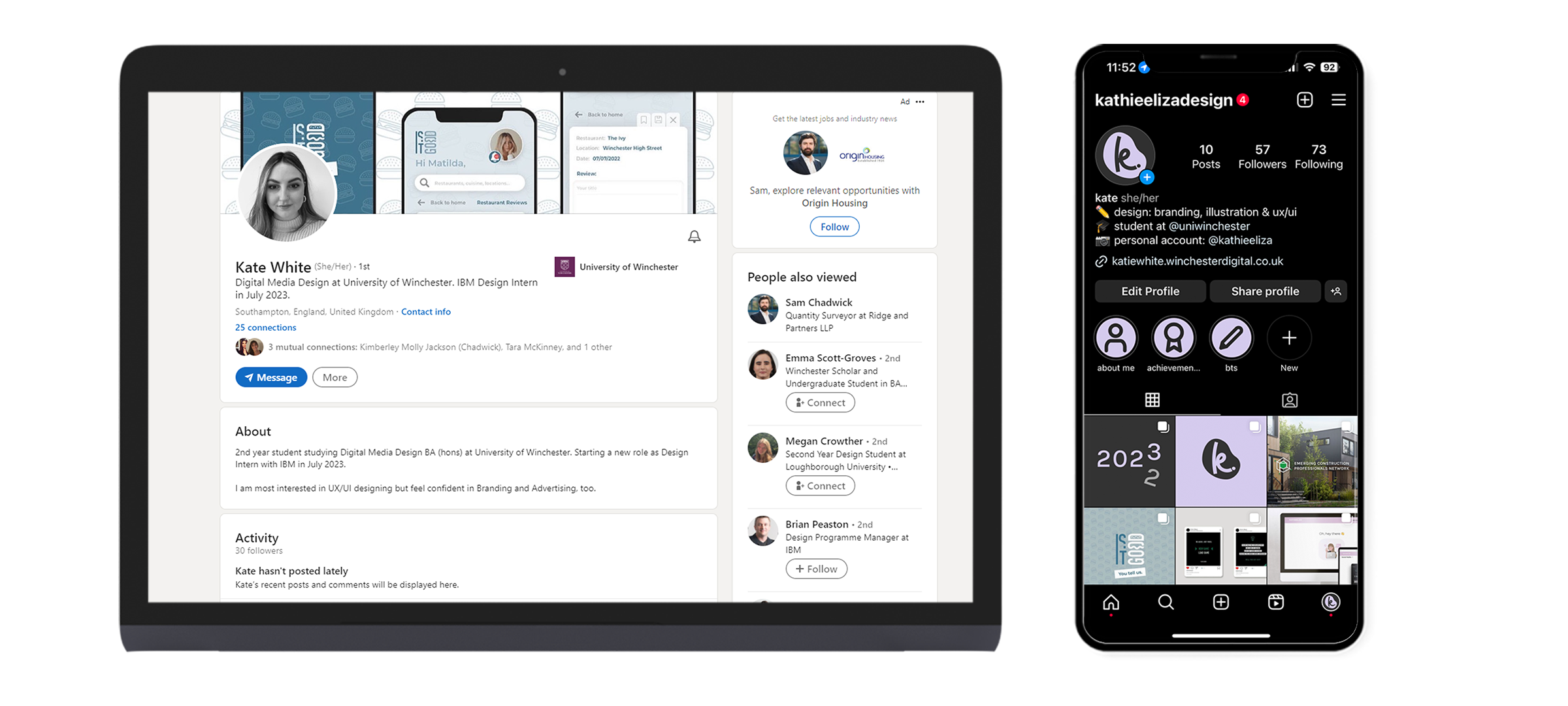
4.5 - Profiles before Project:
In order to reflect on my development, I took screenshots of my accounts before I made progress. Prior to implementing any changes, it was essential that I document them in order to mentally visualise the changes that were made. I had already created Linkedin and Instagram accounts during my first year of university, however I had a limited following on both platforms. The vast majority of Linkedin's 25 connections had been family and friends. Instagram had 57 followers, which is an excellent starting point however very slow growth since I opened the account in the beginning of 2022 - I also followed more individuals.
Planning
5.1 Timetable: I lack experience with regular posting based on past performance. For Instagram's algorithm to promote me, I knew I would need to stick to a schedule. I registered up for the software Notion, where I created a table to track my schedule. I didn't believe I would be able to post more frequently than three times per week, despite the advice of numerous lectuerers to do so. I began scheduling content to be published on Mondays, Wednesdays, and Fridays after discovering that these days were the most popular for publishing.
As you can see, I have divided the table into the following sections: Project title, type of content (post or reel), expected date (which was added when things were delayed), a progress system, as well as date posted. In addition, I added likes and comments, helping me to monitor the engagement growth of my posts.
For Linkedin, I created a similar table with the following modifications: category of content (post or reshare) and repost engagement, which is crucial for various connections to find you.
As informed during one of my social media lectures it would be beneficial to look up the twenty most popular hashtags for our intended demographic to have them on hand when posting it. On the other hand, I encountered a shadowban in the middle of my postings due to the platform's assumption that I was a bot since I applied identical hashtags in every post. I swiftly modified my hashtags for every post to avoid this.
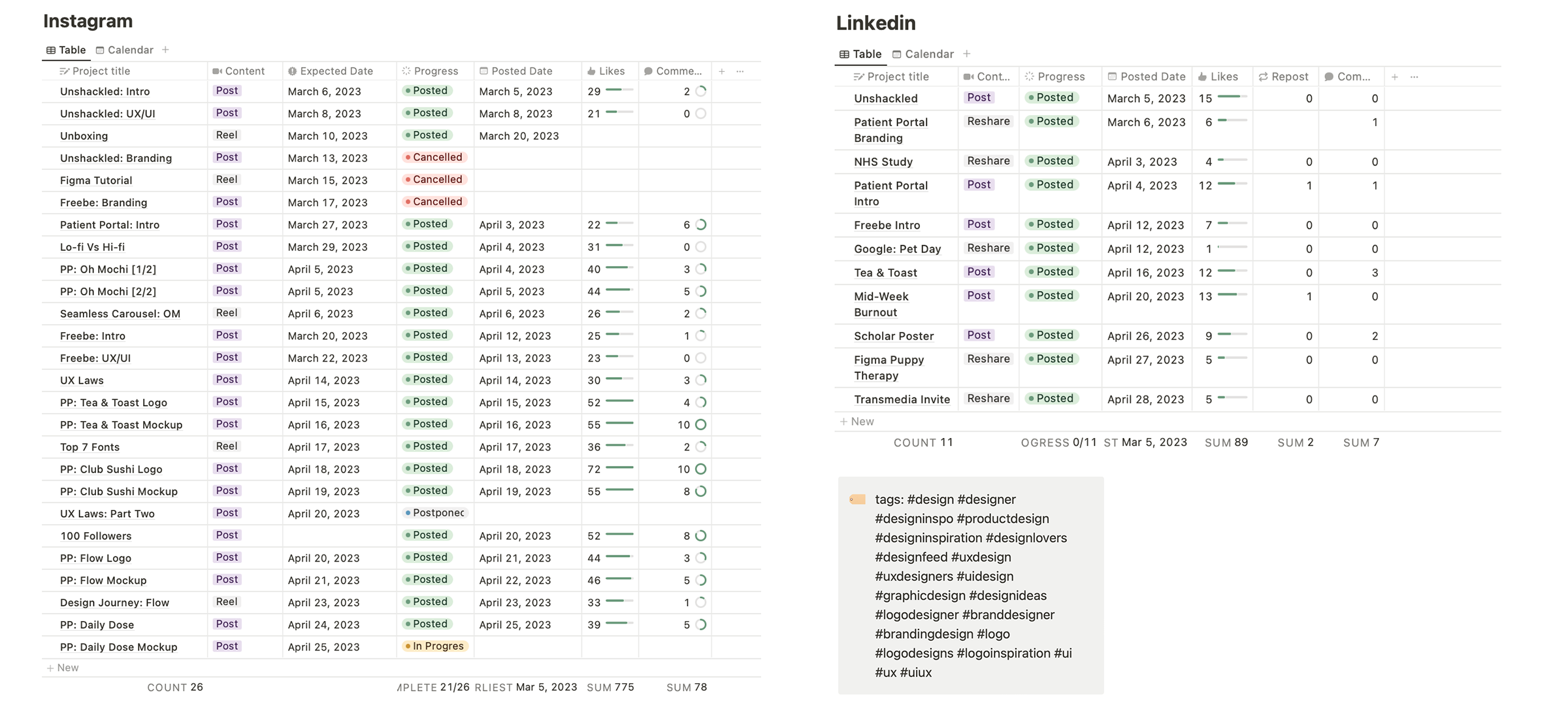
Despite feeling secure in producing images that I uploaded, I felt incredibly apprehensive and unqualified to create reels. I decided to draw up storyboards for each required shot and narration comment. Afterwards on, I realised that preparing reels on an impulse was very time-consuming and took up a great deal of space to store on my phone.
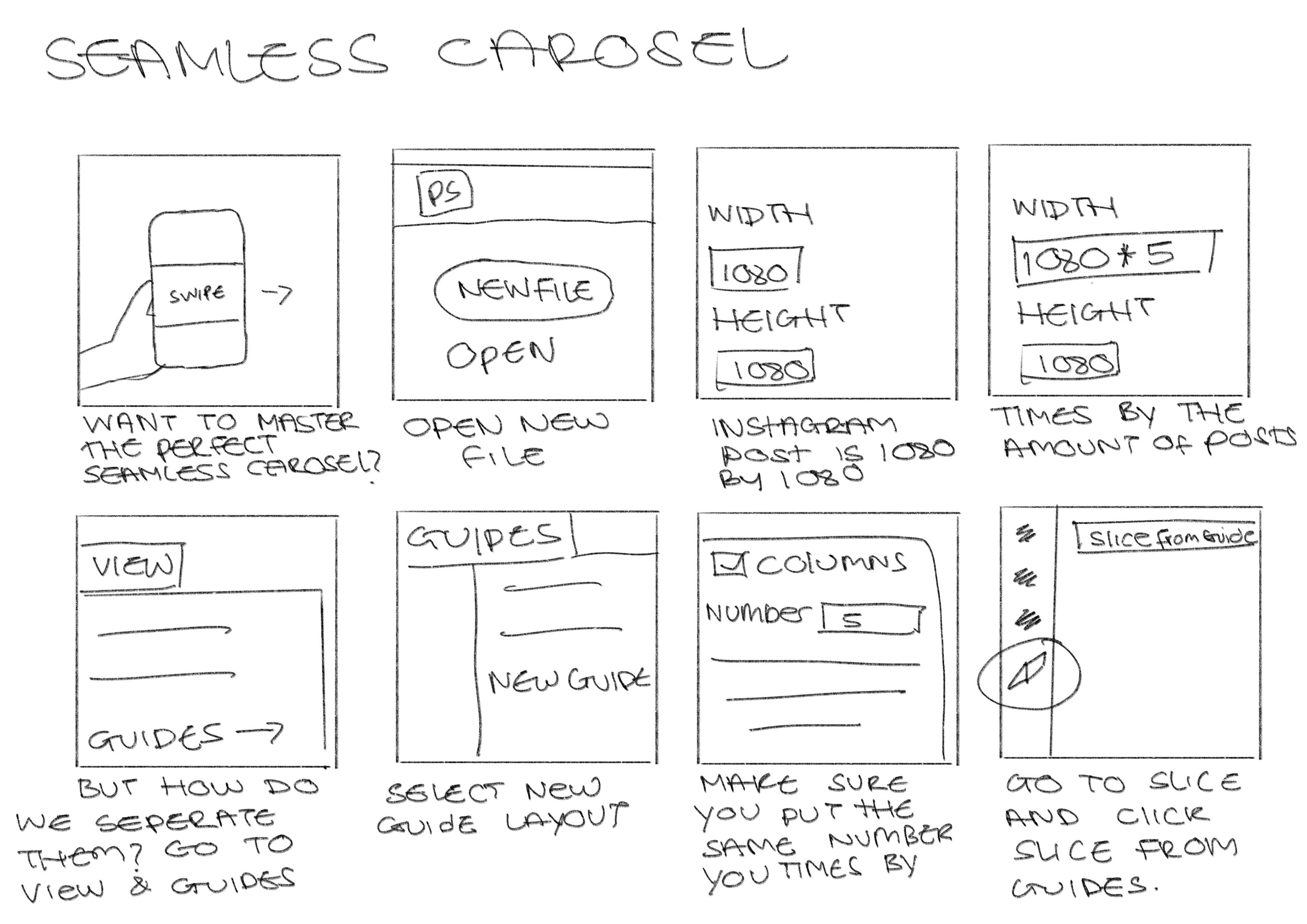

These storyboards serve as a detailed visual description of how to create a seamless carousel on Instagram, something I have taught my classmates in lessons and thought could be a great tutorial for my intended audience (other creators) - including an additional demographic will be customers and hiring managers as educational videos demonstrating the way to do something in a software demonstrates your abilities and illustrates to prospective companies the fact that you are successful at what you do.
Published Content
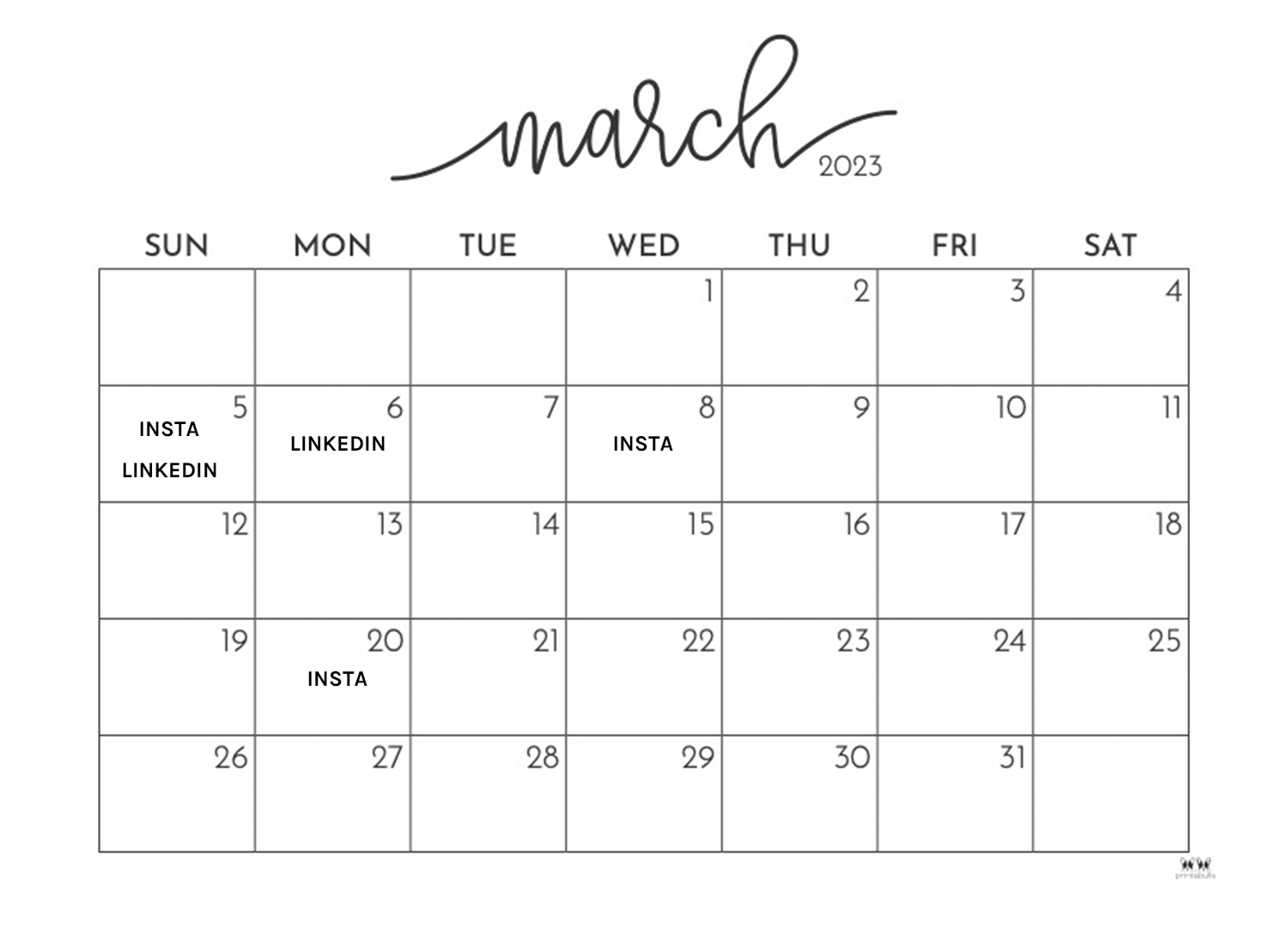
I decided at the start of March to turn out some content and start sharing it on Instagram and Linkedin. As it was far too early to generate any material showcasing my present projects, I put together several posts about the assignments I completed last semester.
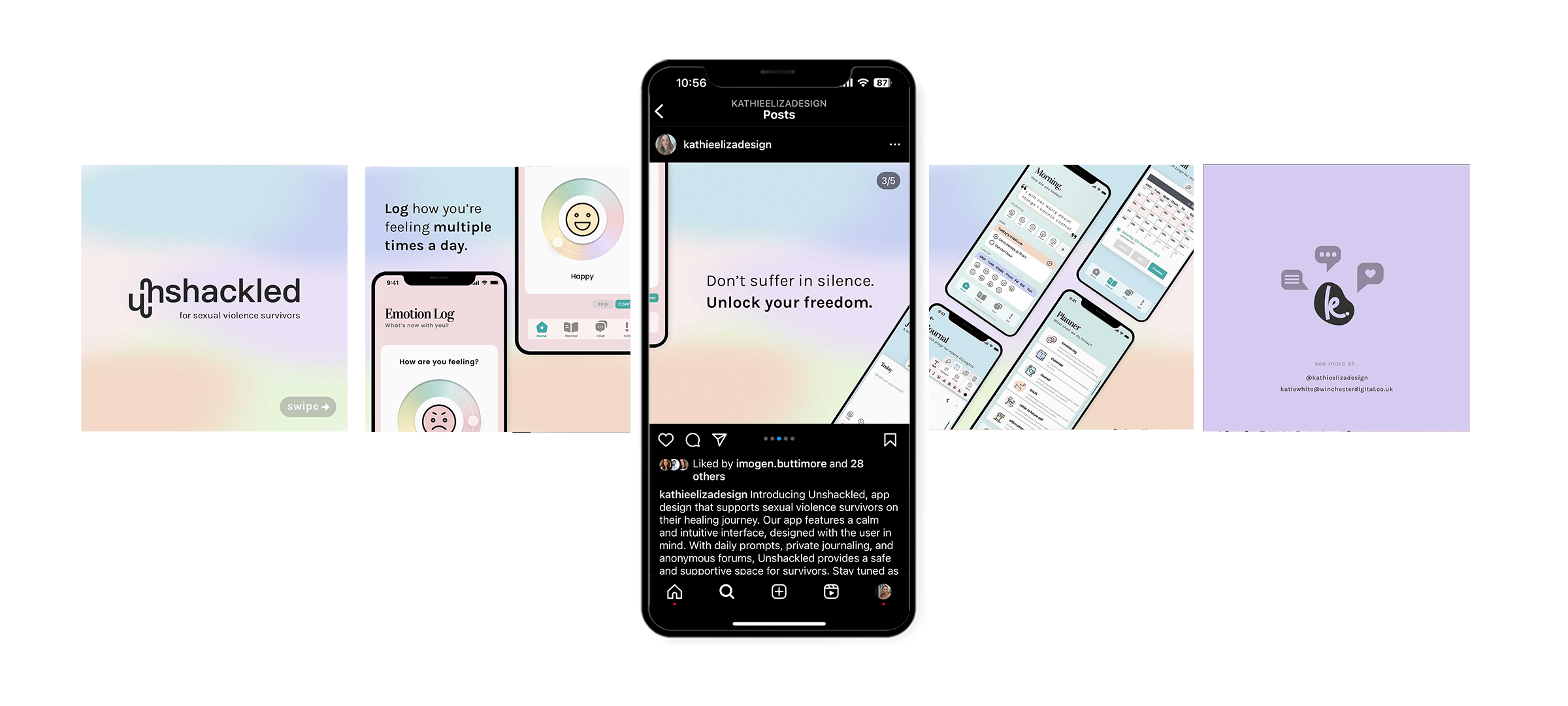
These posts were well-received by my initial 56 followers, but they did not result in any new followers. However, due to a variety of factors, my initial launch into social media did not turn out as intended. In light of the research's focus on how successful reels have been, I was keen on producing them regularly, as they generate far greater engagement than static images.
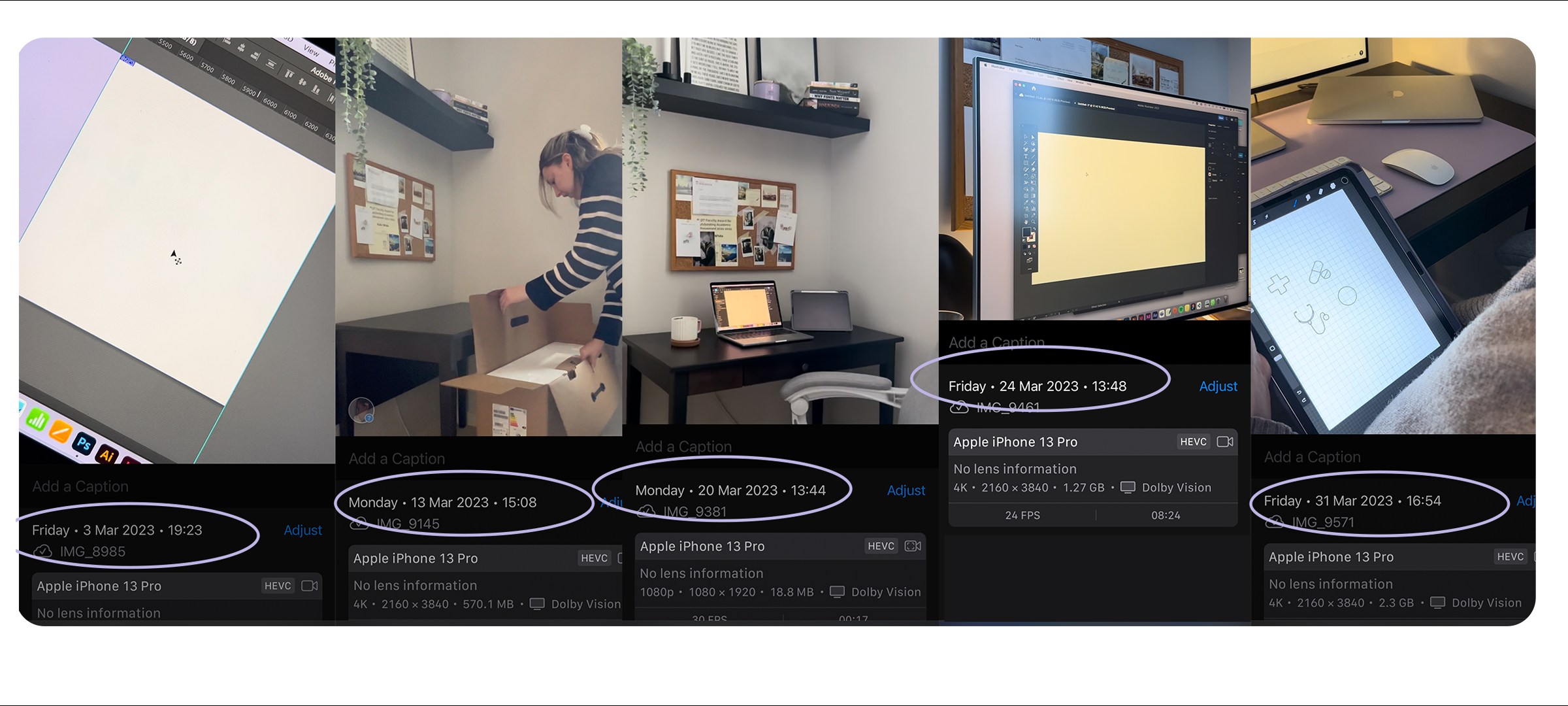
As a result of this, I wasted a whole month recording, criticising the quality, refilming, and then never uploading them. I opted to invest in a smartphone tripod which enabled me to record high-quality content and design with both hands. As you can see, while juggling my other projects and university lectures, I continued to wasting precious time filming an enormous amount of unreleased reels. If I had to recreate this project, I would put a lower priority on reel creation.
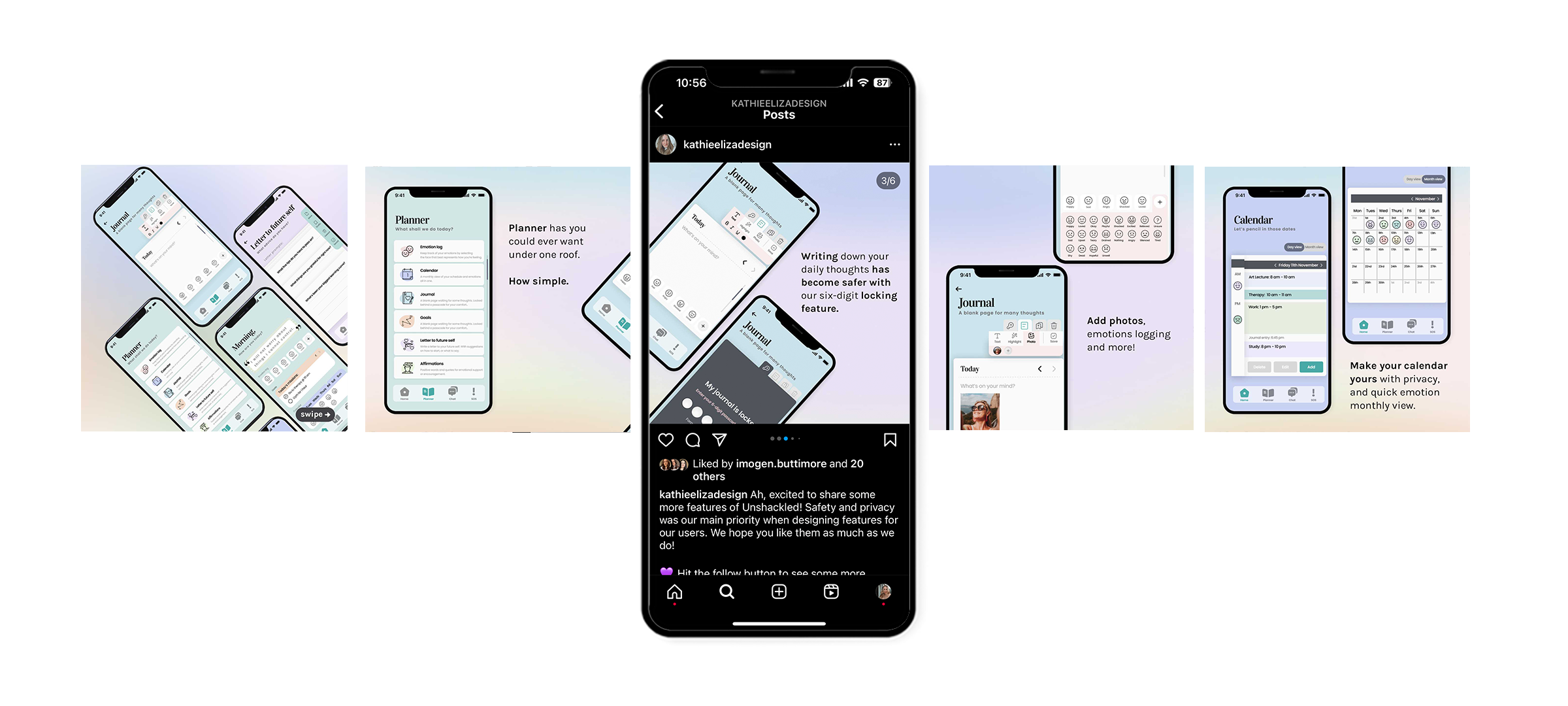
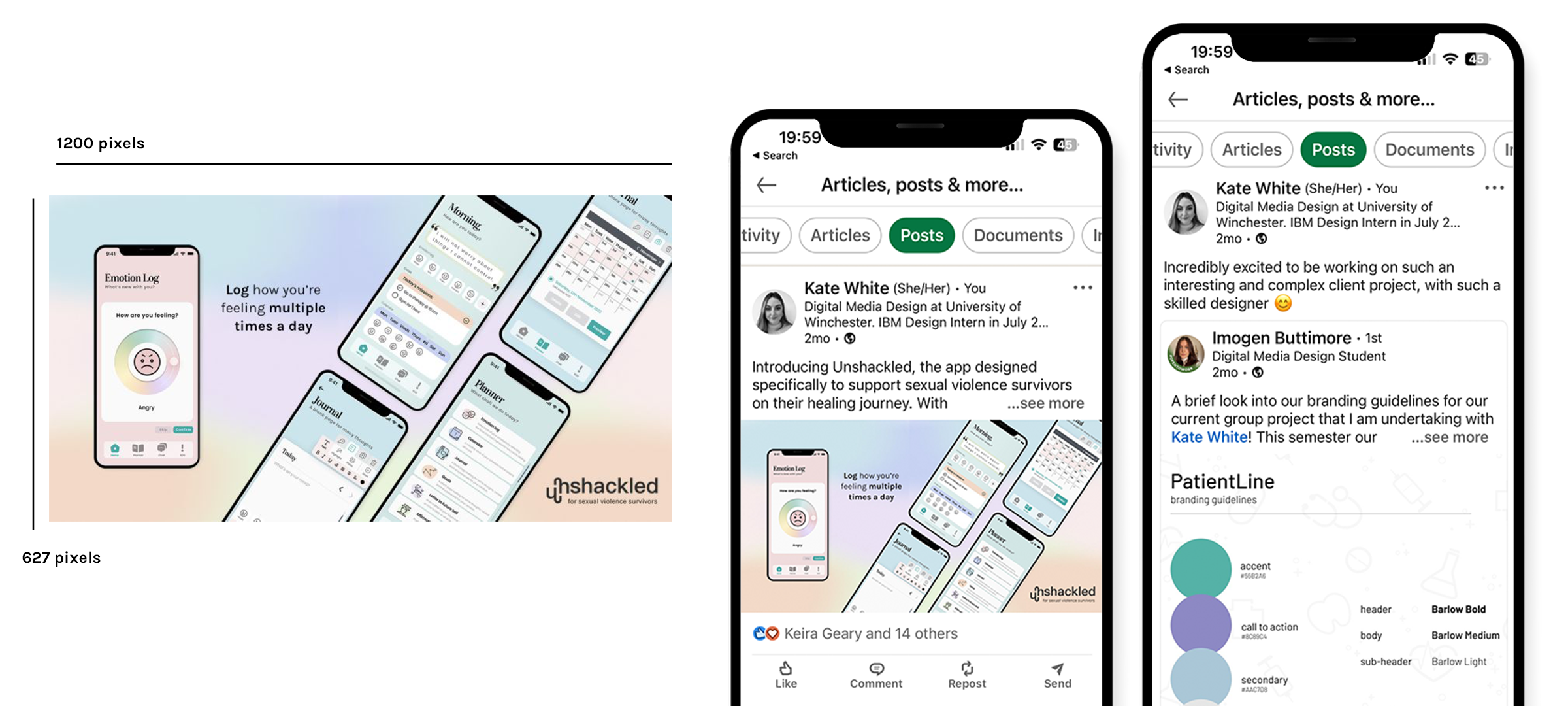
Using the platforms in partnership proved extremely effective. I would produce content for Instagarm in their 1080 x 1080 pixel layout shortly after revamping it for Linkedin in their 1200 x 627 pixel layout using the same assets. This was time-efficient, as I did not spend time designing two independent projects, and it enabled me to create brand consistency.
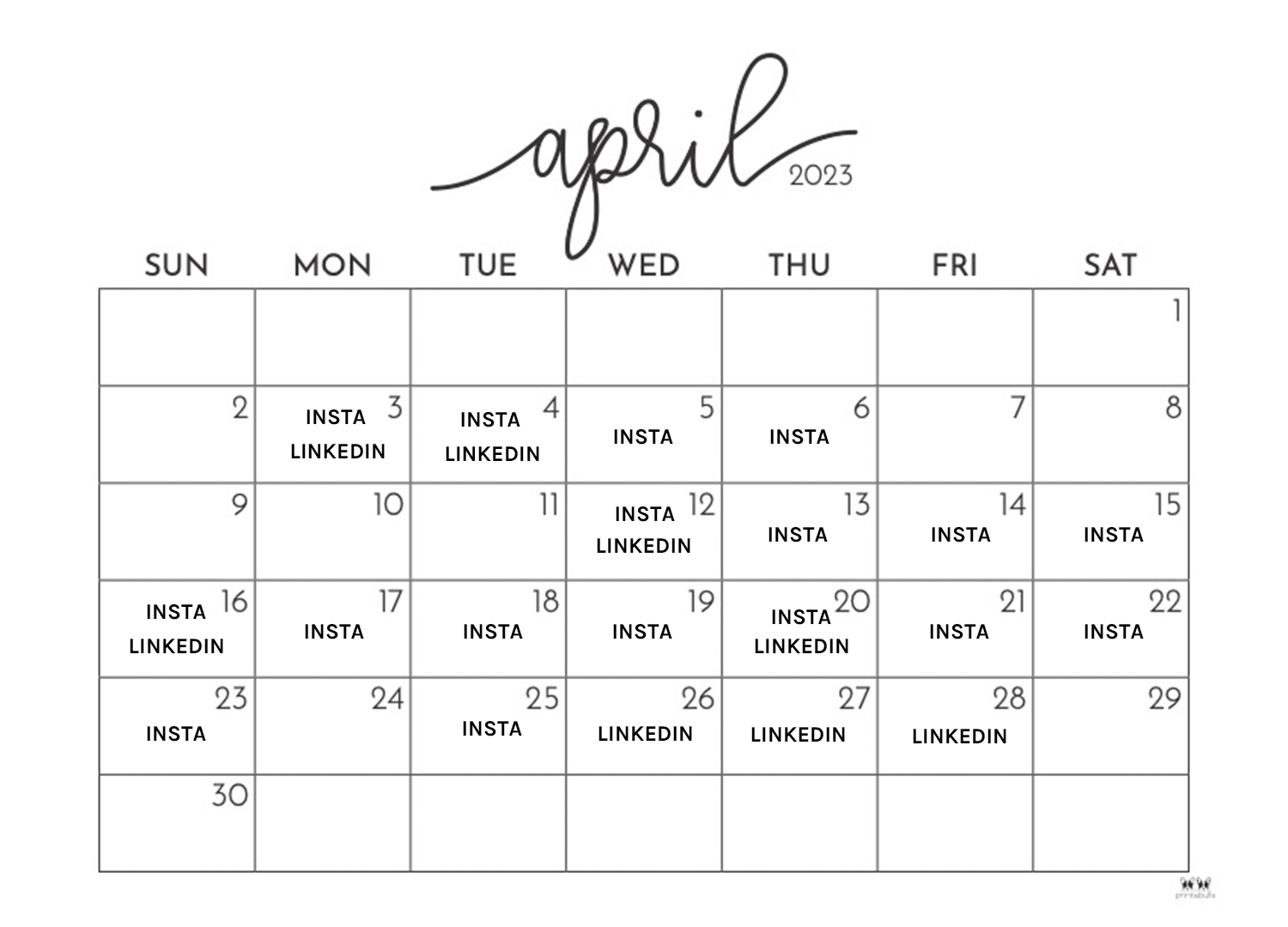
After frustration with March, I gave up focusing my whole attention on producing reels and stuck to what I know; which is seamless carousels and eye-catching designs.

This was my first post that generated numerous comments, all because I posed a question to my audience on the previous slide. I received six comments as opposed to my usual two. This interaction assisted me in obtaining user testing for my upcoming project.
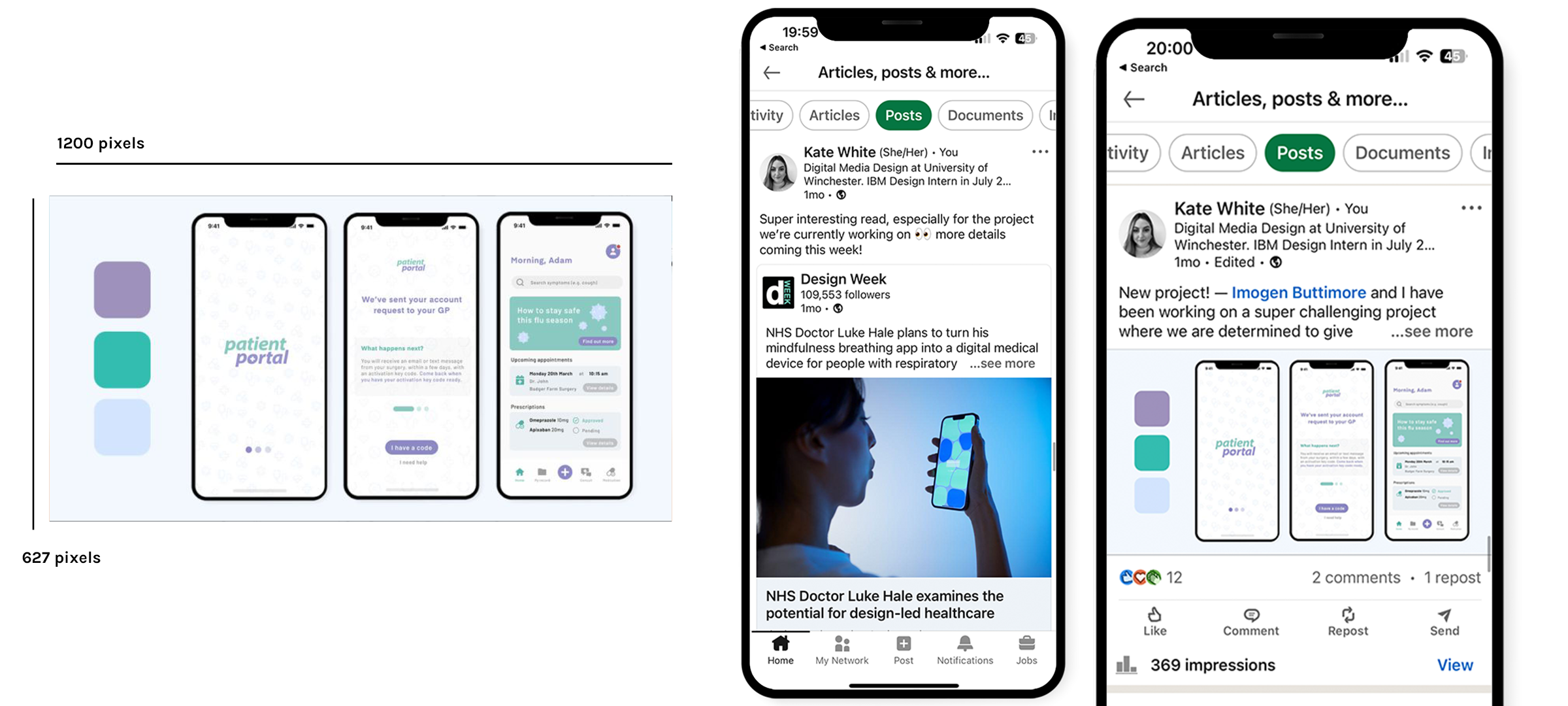
For promotion of this next project I reposted a Linkedin post with my own thoughts for first time. I used a study that was heavily linked to my client project. This acted as a way to get people interested in what I'd post next. I gained 105 impressions with four likes, and the following post featuring the actual project gaining 367 impressions with 12 likes.

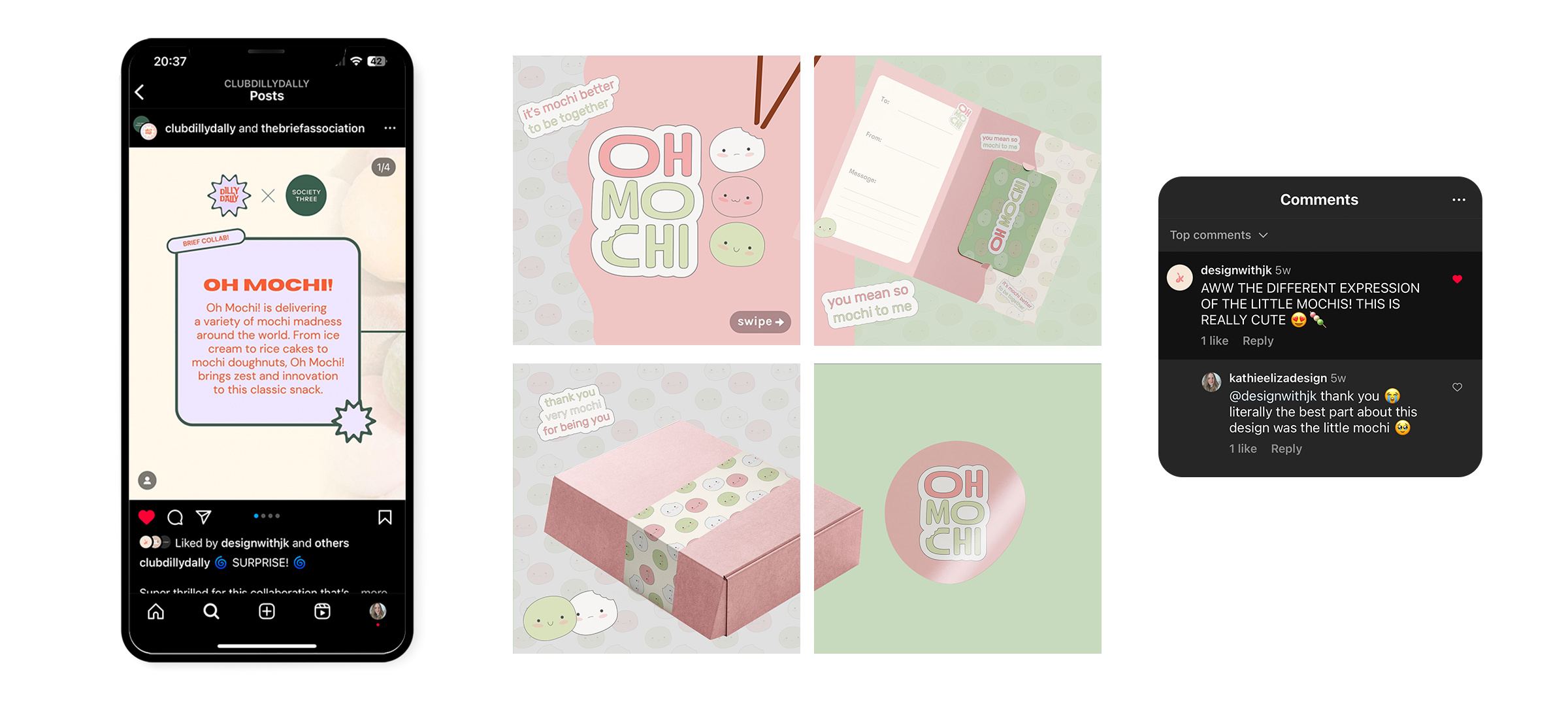
During my university breaks, I frequently enter Instagram brief competitions, and recently realised this would be a fantastic source of regular content to share, as the tasks are supposed to be completed within a few days or a week. I chose to undertake this delightful passion project by @clubdillydally. You are required to create a brand for mochi with product deliverables including the design of the package, packaging paper, gift cards, stickers, and more. It was a challenge for me because, as an inspiring UX designer, I rarely produce packaging design. However, I appreciated collecting free content from websites such as mrmockup.com and unsplash. It forced me outside of my comfort zone. This brief submission earned me 40 to 45 likes on each associated post. I realised that by utilising hashtags where designers were interested in the work of other designers, I had stumbled upon an overwhelmingly encouraging design community. I even received feedback from one of the creators of the prompt, which encouraged me to complete more.
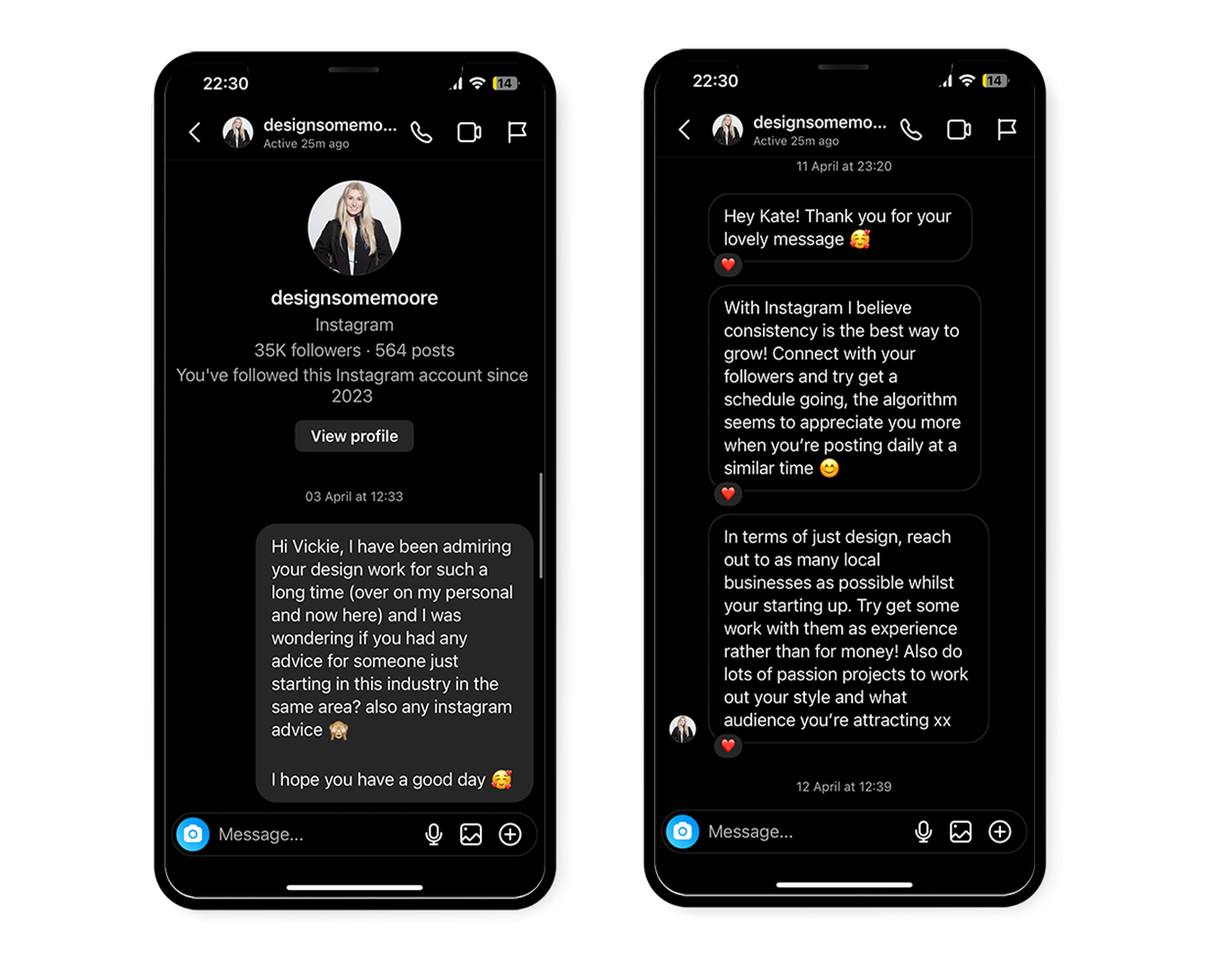
I sought out to one of my primary research inspirations, @designsomemoore, to inquire about her Instagram success. I began publishing daily between 11 a.m. and 1 p.m. after taking her advice, which I found to be incredibly useful. As they recommended, I proceeded to post increasing amounts of passion projects.
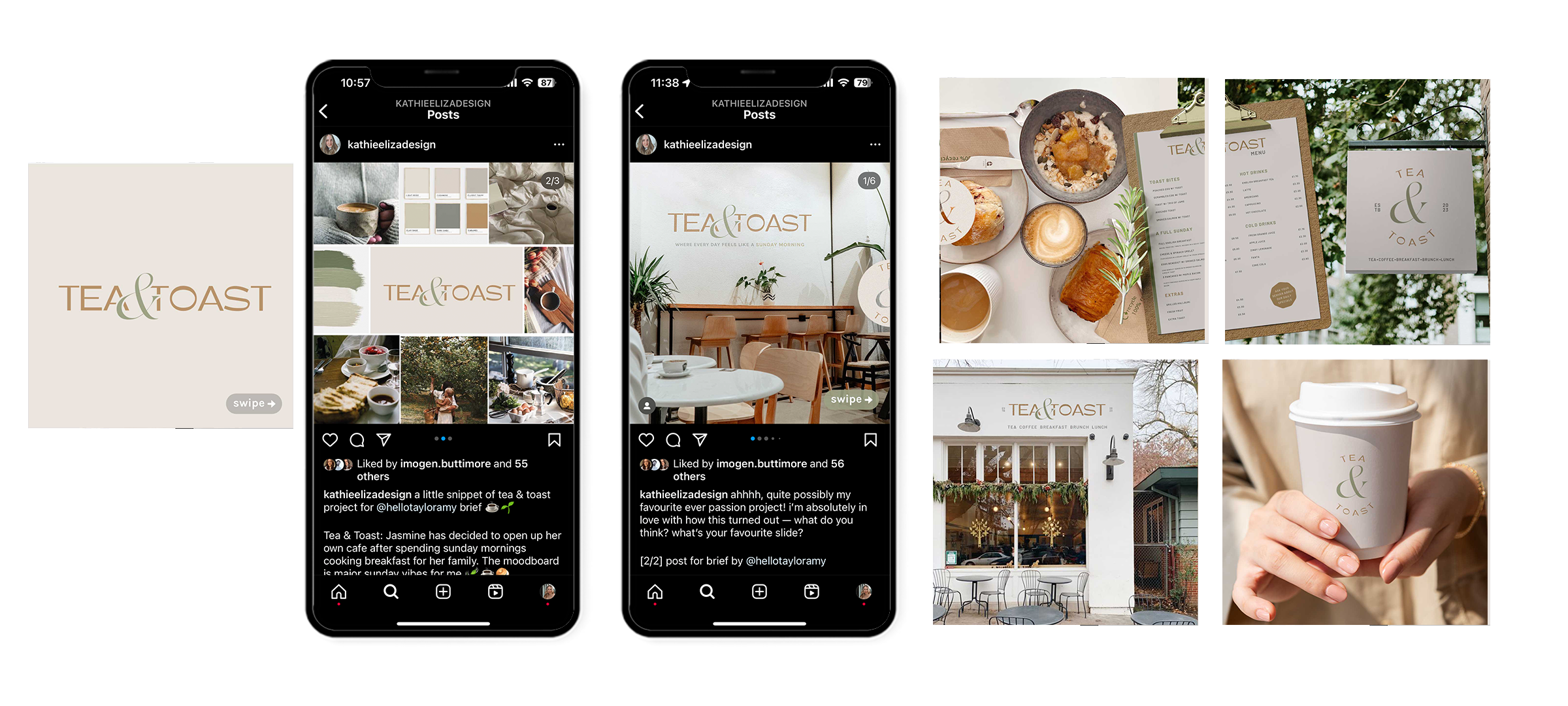
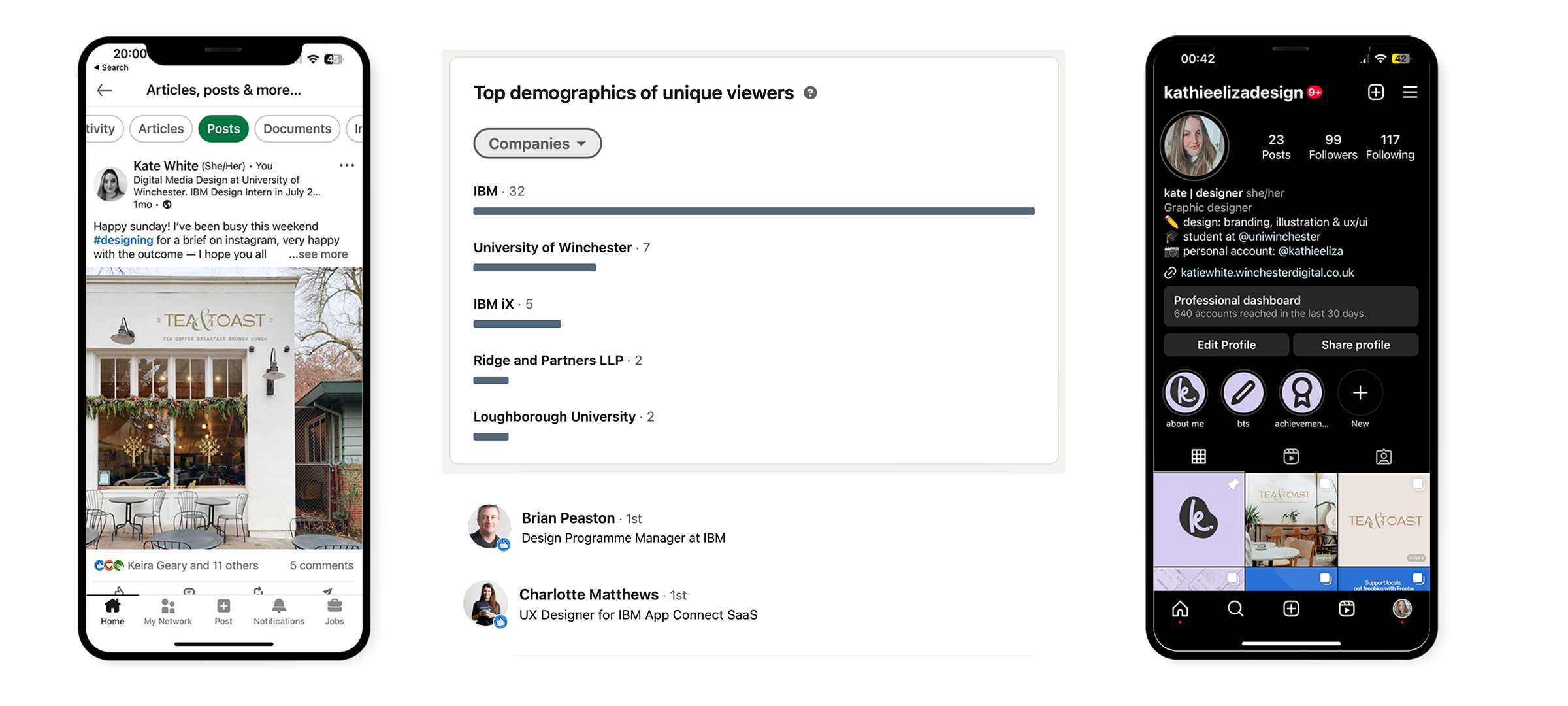
I undertook a second passion project of @hellotayloramy's based on Vickie's excellent recommendation. The project boosted my post engagement, and I began to feel recognised in the hashtags. Again, I posted this content on Linkedin with a very casual "Happy Sunday" caption, which garnered the approval of two IBM designers and was viewed by thirty IBM employees. I was nearing 100 Instagram followers at this point in time; it was my goal to reach 100 followers in order to access insights and statistics about my account and posts. You would be given access to all demographic information regarding your audience, such as their gender, age, and location. This kind of information is crucial to a successful outcome, and I could tailor my postings to coincide with their prime online time frames.
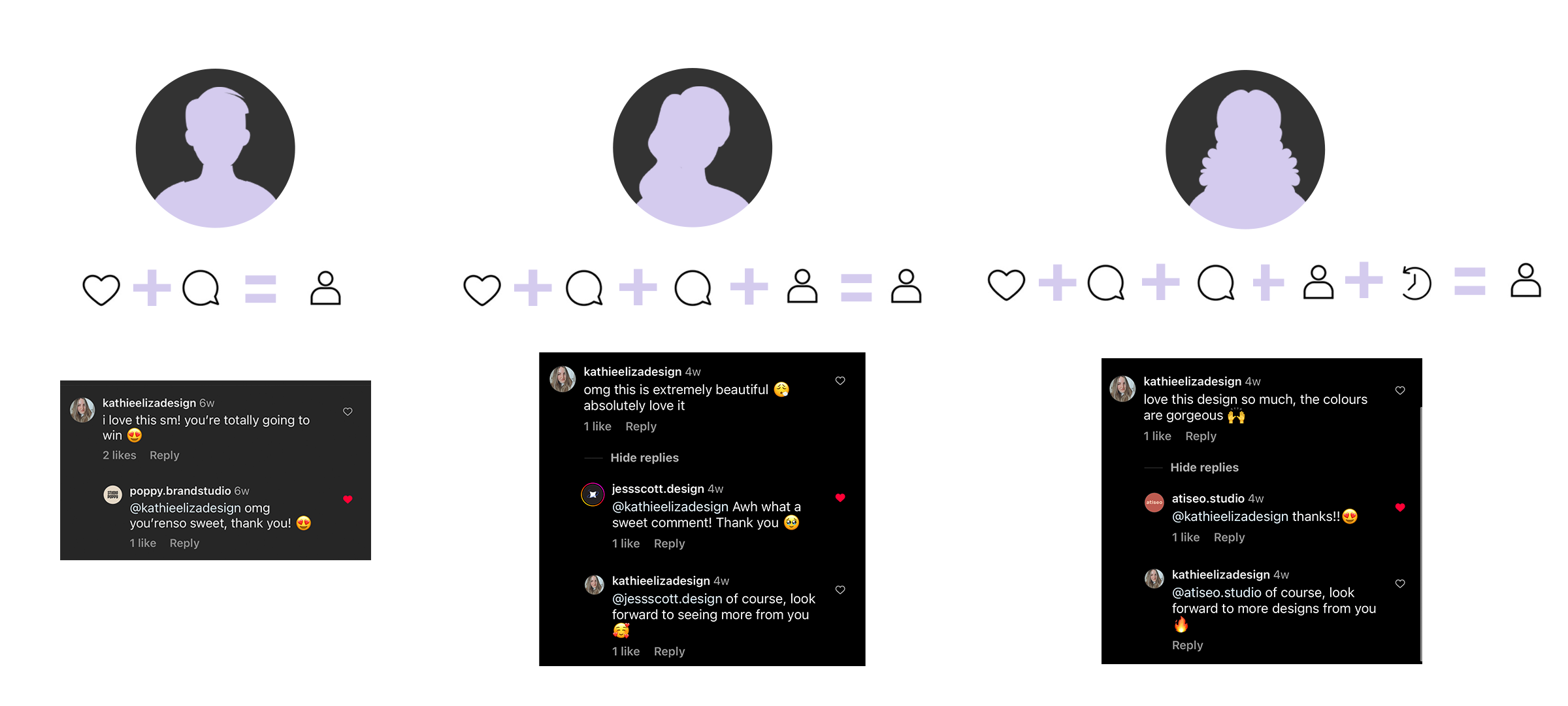
I've made it my mission to gather as many followers as possible since I learned I'd be able to access analytics to help my account develop. After encountering some irritating accounts that played a game of following you so that you subsequently followed these individuals back, they went on to unfollow you. I realised this, but soon discovered my own strategy that led to an unreal increase in my number of followers. I would target users with a similar number of followers to my own, which could range between 100 and 500. Furthermore, I have come across three different types of followers: One; you will like and leave a sincere comment and they will follow you. Two; they would need a little reassurance, so after they reply to your comment you would respond with something like "looking forward to your next post"; and three; they don't trust easily and leave you hanging for a few hours to see if you unfollow, but you don't and they follow you back.
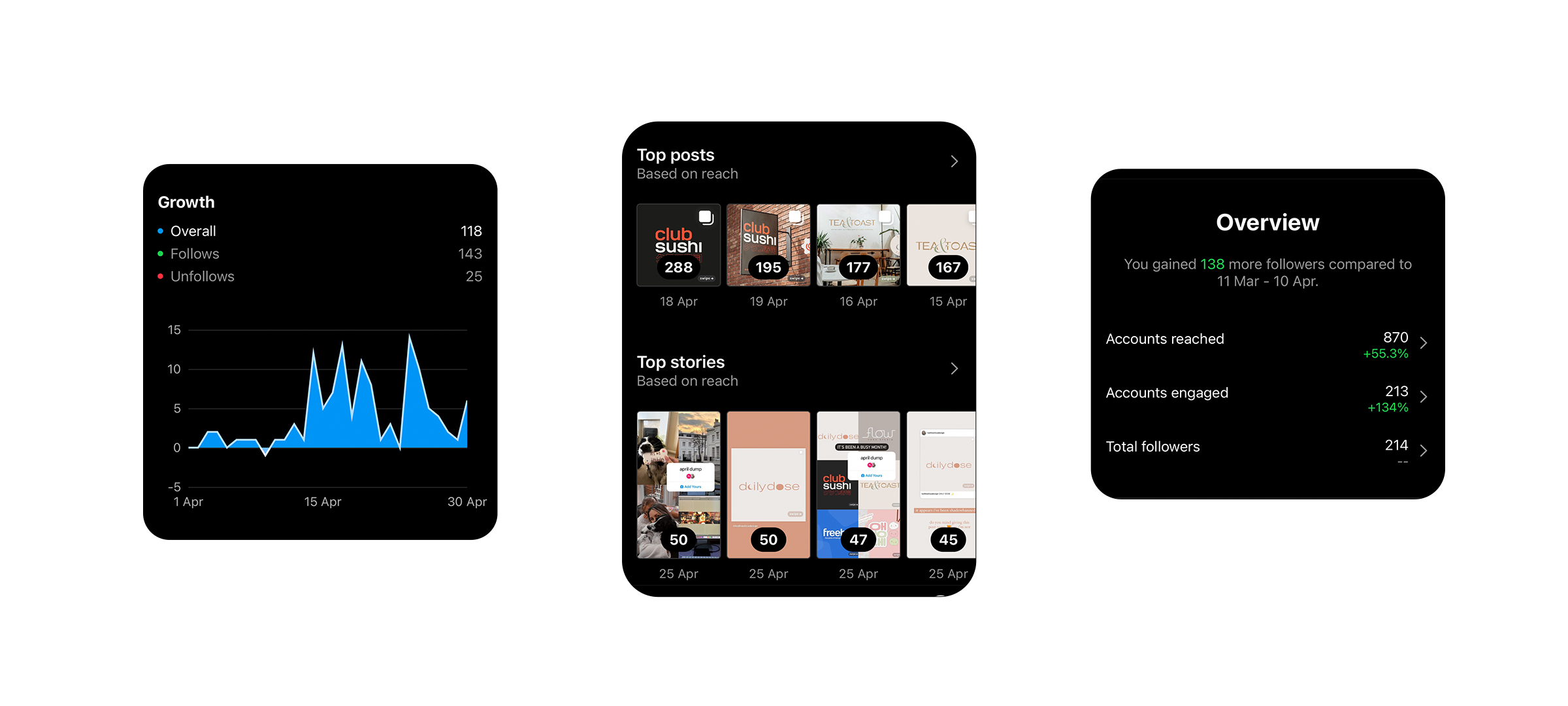
Once I understood this behavioural pattern, I was less concerned with the number of followers because I had a good approach and had already attained my objective of 100 followers. Prior to participating with my community, I had 72 followers at first. A week after modifying my behaviour to be more strategic, I had 150 followers.
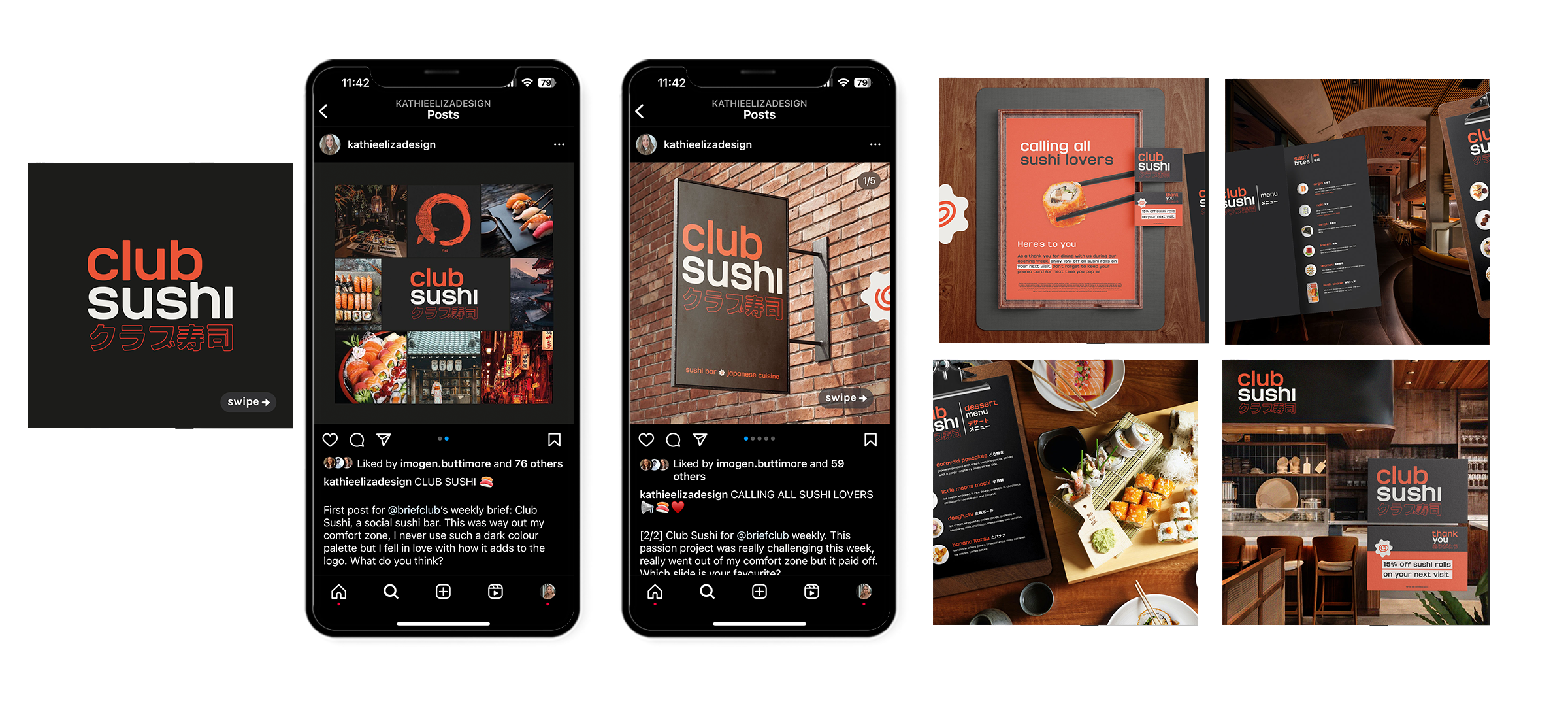
My involvement expanded quickly along with my following. When writing captions, I started to use a more casual, relaxed tone of speech. Instead of being in selling mode, it appeared as like I was talking to my friend, saying, "Check out this thing I did." I was merely showcasing all these awesome products I created this week, rather than writing the content to read like an advertisement. Regulars would always like my work and leave a message merely to say "good job," which made me feel like I was officially a part of this design community. This undoubtedly sparked conversation in my comments area.
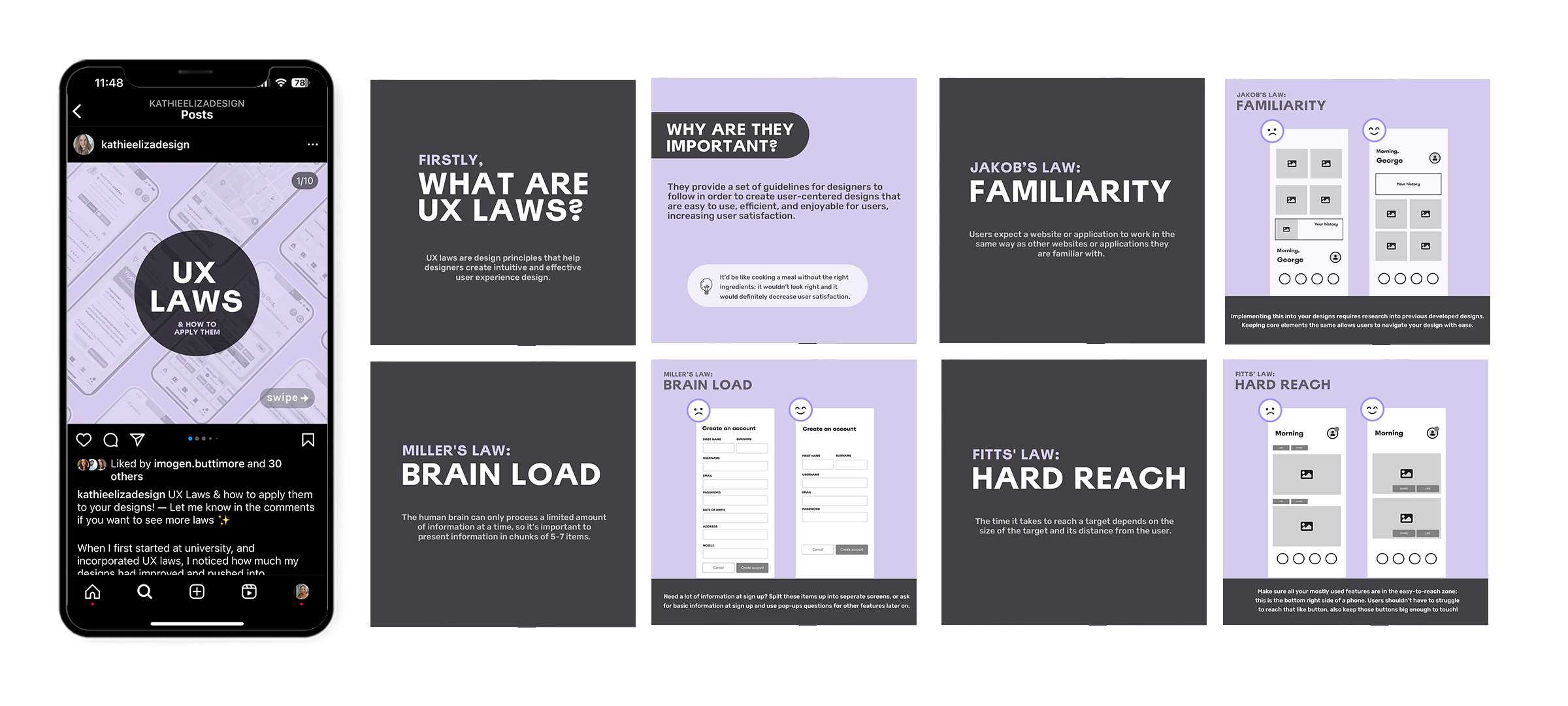
In the course of this project, I wanted to utilise my platform to inform others about the aspects of design that I find to be immensely fascinating. Even though the interaction wasn't as high as it might have been for this social media effort, I did receive some encouraging remarks. This was the longest post I created. As I mentioned before, showing potential employers that you are well-educated in your profession might be beneficial. In addition, I worked hard to be open about the design process and to display incomplete work, such as low-fidelity wireframes.

An analysis of my LinkedIn statistics reveals how much development I had made after a month of publishing and interacting with contacts. It was crucial for me to take full advantage of the features that LinkedIn provides, such as the skill-adding feature, which identifies the skills you need for a particular job and allows you to add them to your profile. As you can see in the image above, I was the ideal candidate for an internship as a product designer. I also utilised the "feature" tool on my page to highlight my work, which resulted in a few more interactions for each connection I made.
SDG 17
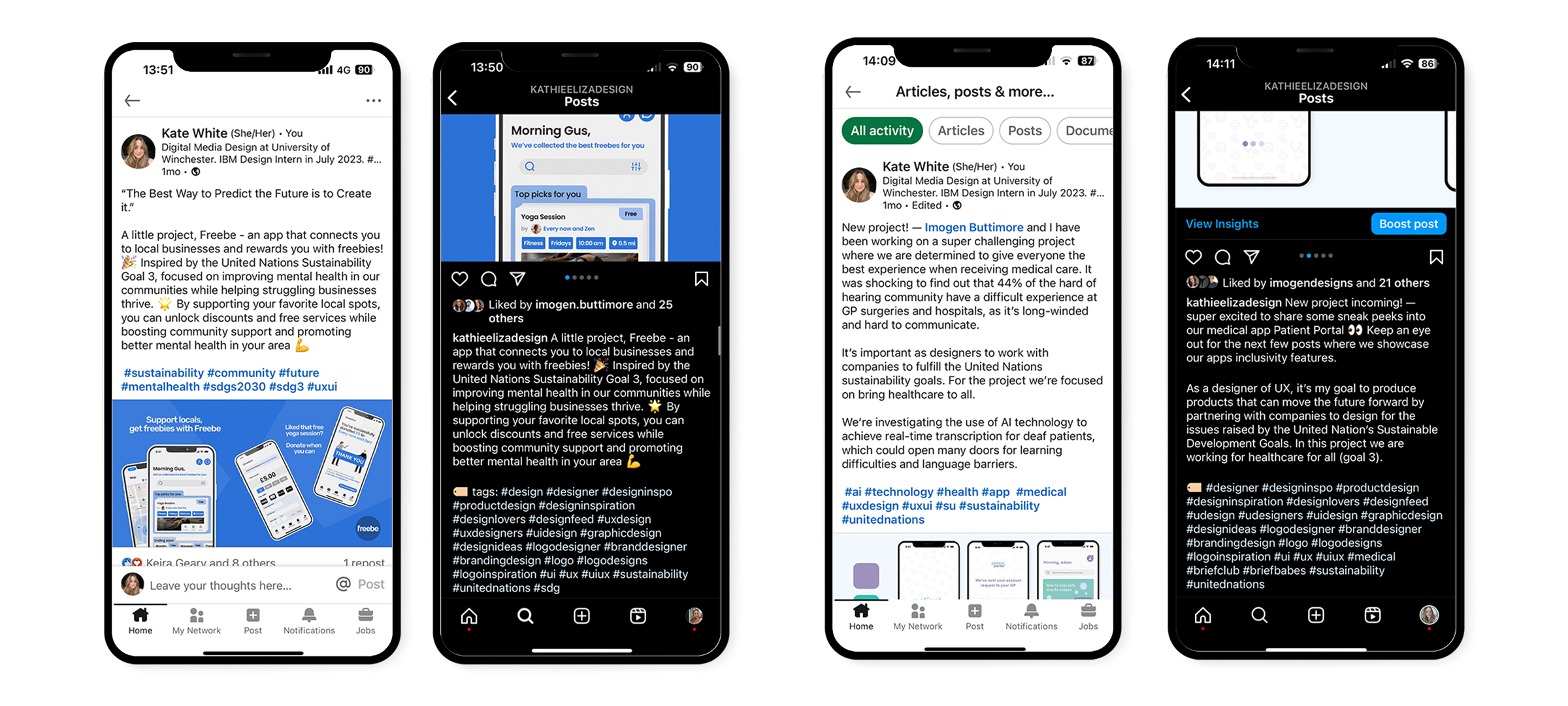
We were to consider how UN Sustainable Development Goal 17 (Partnerships) may apply to our project for this assignment. I concentrated on writing posts on projects I developed that were particularly based on SDGs from the United Nations. I am able to make people aware of the objectives and start a conversation about these concerns because I am a designer. By taking part in events like the Royal Society of Arts Student Awards, which place a strong emphasis on these objectives. When it comes to creating sustainable development, we can all share responsibilities. Goal 17 can encourage a more open-minded and collaborative approach to using design to build a sustainable future.
Project Overview

In retrospect, I see that this project was really challenging at first, but that after I got into a rhythm and learnt more about these platforms firsthand, I picked up interaction strategies pretty quickly. I believe that even though I performed well on both, I still exceeded my own expectations for what Instagram might provide. I experienced a "Aha! I get how this works now" moment, and I'll keep using what I've learned over the past 12 weeks to further my own career. Because I recognise the potential benefits, I hope to have spare time in the future to devote a significant amount of effort to social media.
